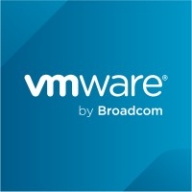

VMWare Tanzu CloudHealth and AWS Trusted Advisor compete in the cloud management products category. VMWare Tanzu CloudHealth stands out for cost-focused operations, while AWS Trusted Advisor provides extensive capabilities that enhance AWS services.
Features: VMWare Tanzu CloudHealth provides powerful cost optimization, governance features, and enhanced compliance tools. AWS Trusted Advisor offers security optimization, performance improvement tools, and real-time guidance for cloud infrastructure management.
Ease of Deployment and Customer Service: VMWare Tanzu CloudHealth is recognized for its straightforward deployment process and responsive customer support. AWS Trusted Advisor integrates seamlessly within the AWS ecosystem, although its customer service is less personalized.
Pricing and ROI: VMWare Tanzu CloudHealth offers competitive setup costs and strong ROI through cost savings and resource efficiency. AWS Trusted Advisor requires a higher initial investment, but its value is seen in AWS-specific insights and optimization recommendations that lead to significant long-term benefits.
| Product | Market Share (%) |
|---|---|
| AWS Trusted Advisor | 1.0% |
| VMWare Tanzu CloudHealth | 1.9% |
| Other | 97.1% |


| Company Size | Count |
|---|---|
| Small Business | 5 |
| Large Enterprise | 3 |
| Company Size | Count |
|---|---|
| Small Business | 4 |
| Midsize Enterprise | 2 |
| Large Enterprise | 4 |
AWS Trusted Advisor is your customized cloud expert! It helps you to observe best practices for the use of AWS by inspecting your AWS environment with an eye toward saving money, improving system performance and reliability, and closing security gaps.
VMware Tanzu CloudHealth, formerly known as VMware Aria Cost Powered by CloudHealth, is a specialized cloud management platform tailored for Multi-Cloud Cost Optimization. It offers comprehensive visibility into cloud spending across various providers, enabling users to identify areas for optimization and make informed resource allocation decisions. With features like reserved instance management, resource rightsizing, and automated cost governance policies, it facilitates financial management for optimal cost efficiency. Beyond cost optimization, Tanzu CloudHealth enhances cloud operations through workload optimization and governance automation, catering to multi-cloud environments encompassing public, private, and hybrid clouds. Its primary focus remains on enabling organizations to effectively manage and reduce cloud expenditures while supporting operations across diverse cloud platforms.
We monitor all Cloud Management reviews to prevent fraudulent reviews and keep review quality high. We do not post reviews by company employees or direct competitors. We validate each review for authenticity via cross-reference with LinkedIn, and personal follow-up with the reviewer when necessary.